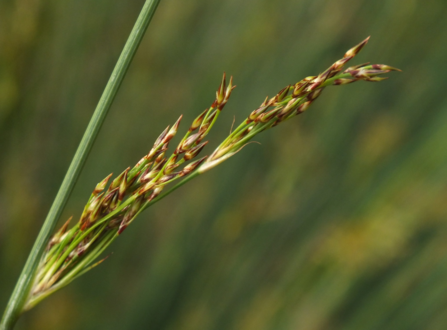
Hard rush by Shadowshador
Hard rush
The stiff, spiky and upright leaves and brown flowers of hard rush are a familiar sight of wetlands, riversides, dune slacks and marshes across England and Wales.
Scientific name
Juncus inflexusWhen to see
January to DecemberSpecies information
Category
Statistics
Height: up to 1mCommon.
About
The grey-green, rigid stems of hard rush are a distinctive feature of damp ground, such as wet grassland, riversides, dune slacks and marshes. These stems were used for basket-making and weaving in times past, but are thought to be poisonous to livestock. The brown flowers of hard rush appear from May to July.How to identify
Hard rush has tall, rigid, grey-green stems without leaves; they are stiffer and more brittle than those of the similar Soft rush. Its brown flowers are borne in loose clusters.Distribution
Mainly found in England and Wales, scarce elsewhere.Did you know?
Hard rush can produce as many as 200,000 seeds per plant, which are dispersed by the wind. As with many sedges and rushes, it can spread also using rhizomes (underground stems).
Hard rush by Shadowshador
